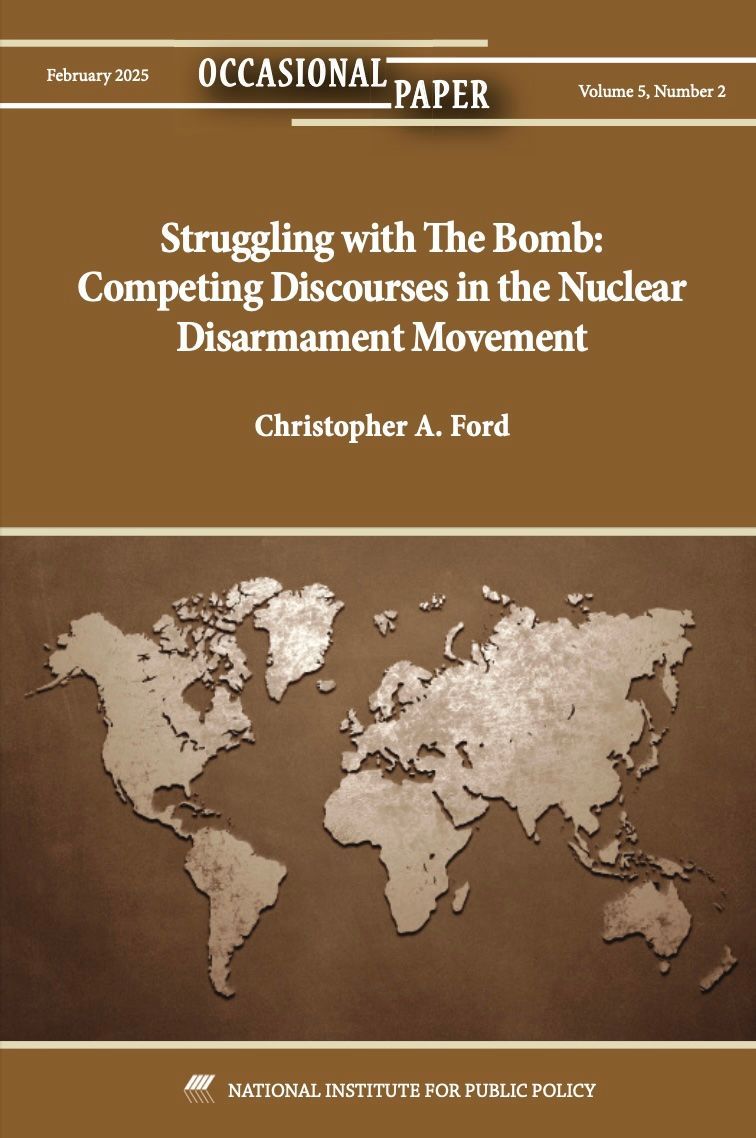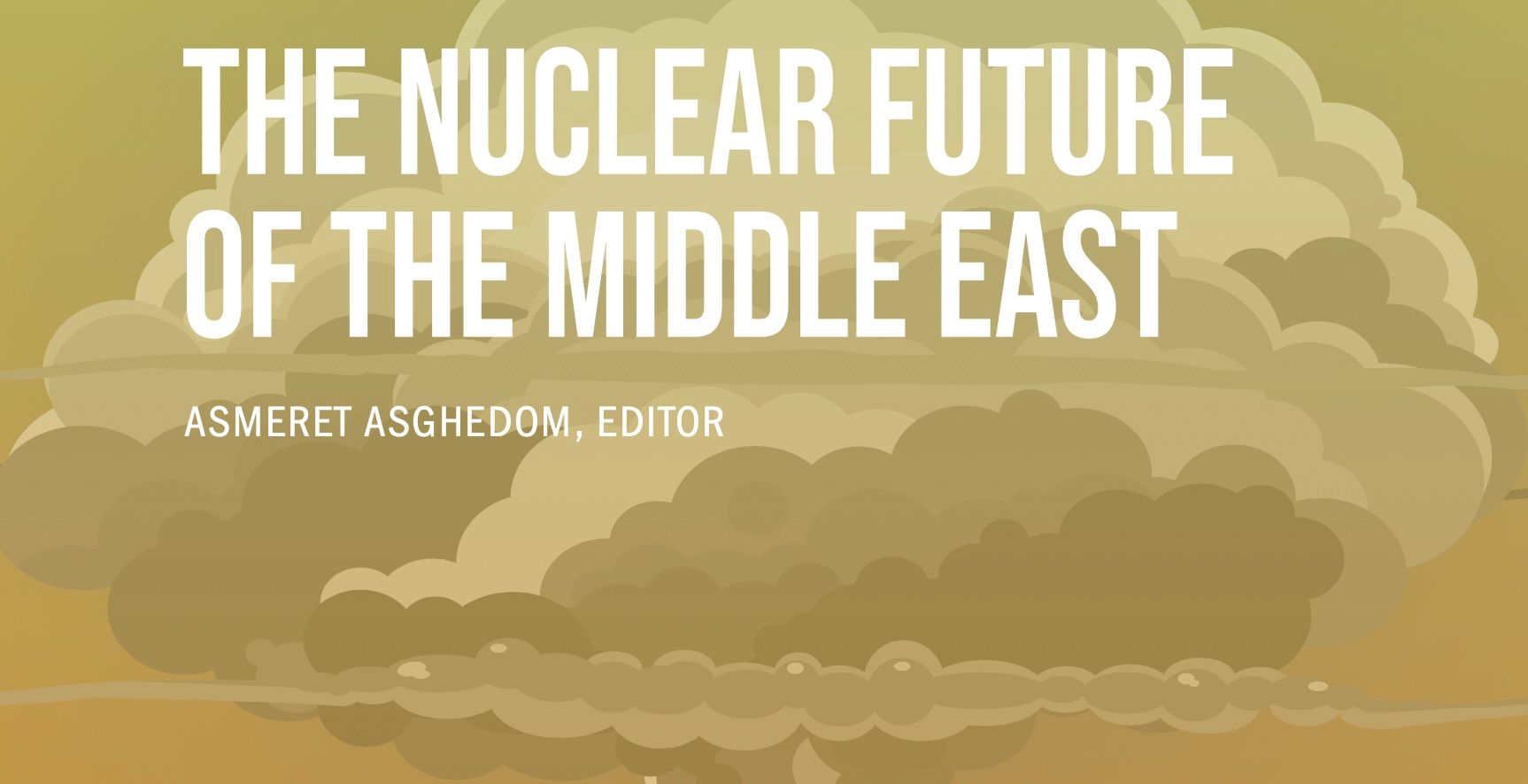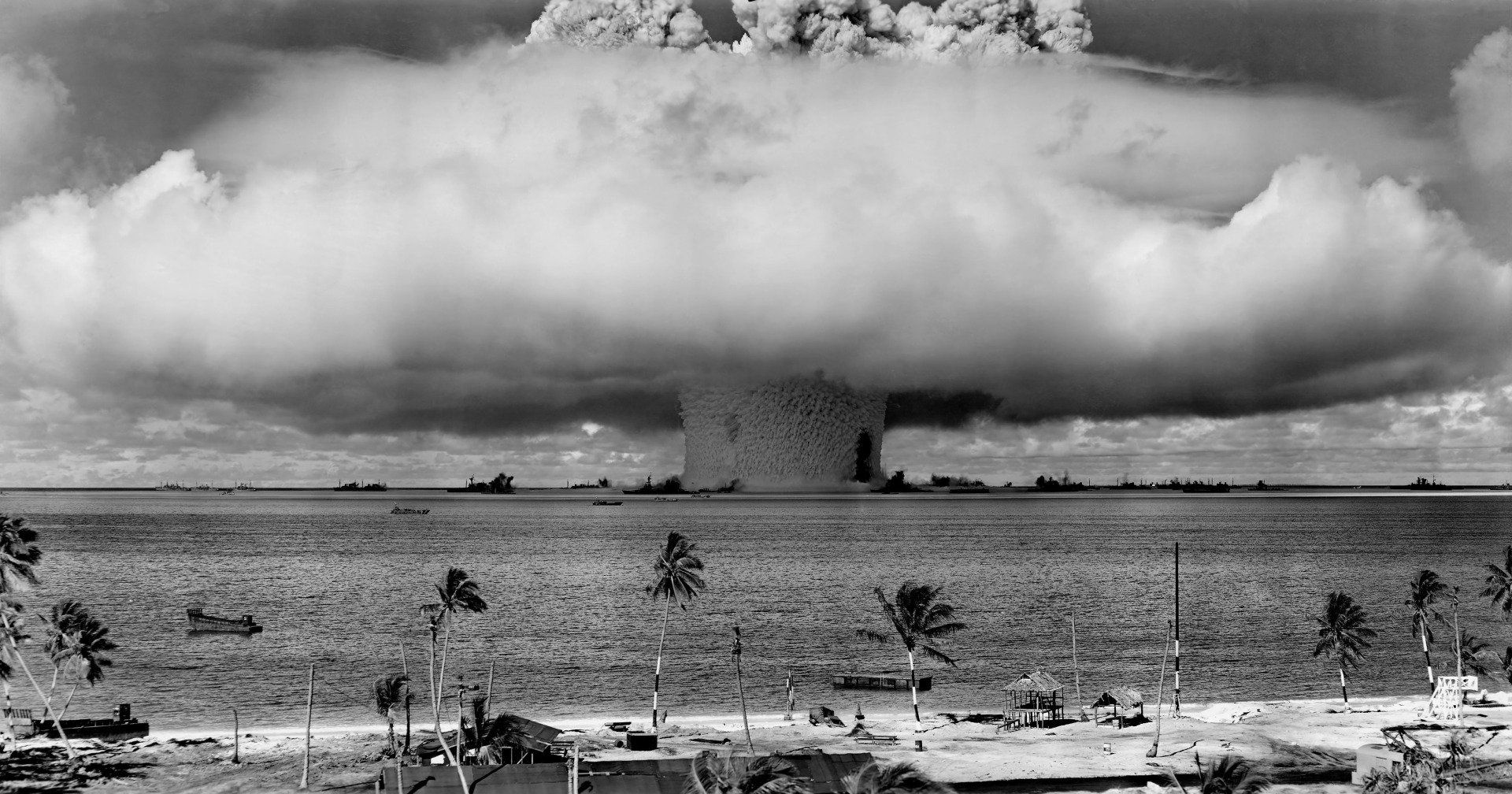The Hon. Christopher A. Ford
New Paradigms Forum -- International Security Policy Since 2009
Security, Proliferation, and Preserving Sovereign Independence in the Indo-Pacific
Below is the text upon which Dr. Ford based his remarks to the dialogue on the U.S.-Vietnam Comprehensive Strategic Partnership in Hanoi, Vietnam, on September 12, 2024, sponsored by the Pacific Forum and the Diplomatic Academy of Vietnam.
Good afternoon. It’s a great pleasure to be a part of this dialogue. This is the first time I’ve been to Hanoi since I left government service, and it’s a great pleasure to be back.
When I last participated in a Pacific Forum dialogue with Vietnam, it was back in May of 2021, and – due to the pandemic – we had to keep it a “virtual” engagement, conducted over Zoom. In my remarks to that event, I focused on the great potential that exists for U.S.-Vietnam cooperation in civil-nuclear energy production under the so-called “123 Agreement” signed between the United States and Vietnam in 2014.
From press reports, I understand Vietnam may be restarting its nuclear power efforts after an earlier 2016 decision suspending nuclear power development plans, and that Russia continues to urge Vietnam to purchase Russian reactors. You won’t be surprised to hear that I still think that entanglement with Russia’s nuclear industry would be an unwise, even dangerous decision – hardly less wise than Vietnam allowing Chinato gain such a foothold here.
But there are good reasons for Vietnam to continue on the path of becoming the first country in Southeast Asia with nuclear power generation, and I believe there is excellent potential for the United States and Vietnam to make such cooperation part of our new, upgraded “Comprehensive Strategic Partnership.” Especially now that the U.S. Nuclear Regulatory Commission has certified the first of a number of new designs for Small Modular Reactors (SMRs), I think this is a rich arena for cooperation.
Turning to this panel’s topic of preventing nuclear weapons proliferation, I believe there is much we can do to fight proliferation together – not least in areas such as:
- cooperation to improve strategic trade controls;
- working together to promote International Atomic Energy Agency (IAEA) safeguards best practices, including the Additional Protocol (AP), in the region and more broadly;
- improving cooperation in enforcing United Nations proliferation sanctions;
- improving cooperation in interdicting proliferation-facilitating transfers in and through Southeast Asia; and
- improving the safety and security of nuclear materials and radiological sources in the region.
On the subject of preventing nuclear proliferation, however, what I’d like to focus on in my own remarks here this afternoon is the ways in which nonproliferation is tied to – and in some ways depends quite crucially upon – regional security. People often emphasize the ways in which proliferation can produce problems in regional security and stability, and that’s quite understandable.
What I would also like to flag, however, is the fact that this is a two-way relationship. Specifically, it is also the case that the failure to address problems in regional security can lead to nuclear weapons proliferation.
The Challenge of “Legitimate” Proliferation
Nuclear weapons proliferation, after all, isn’t something that just happens, like bad weather or earthquakes. It’s a path that national leaders choose.
Sometimes countries choose the path of proliferation for discreditable reasons. This could include a dictator’s paranoia and desire for global status (as with North Korea) or the ambitions of a vicious theocratic regime to achieve regional hegemony by overawing and coercing its non-nuclear-armed neighbors (as with Iran).
But though it may be unfashionable to make this observation, it is also possible to choose the path of proliferation – and indeed potentially even to use nuclear weapons – for legitimate reasons – such as in “an extreme circumstance of self-defense, in which the very survival of a State would be at stake,” as the International Court of Justice put it in 1996.
One thus cannot have an honest discussion about either disarmament or proliferation without acknowledging the fact that, in principle, a state might indeed come to face threats great enough that they indeed justifynuclear proliferation.
That certainly doesn’t mean that nuclear proliferation is a good thing. To the contrary, as I have warned for many years, in most cases it is likely to be profoundly destabilizing. After all, in relationships in which countries face each other with nuclear weapons, the number of potential axes along which nuclear deterrence might break down will tend to increase rapidly, all other things being equal, as the number of players increases.
If there are only two states with nuclear weapons, for instance, there is only one “nuclear axis” that could – potentially – break down into a nuclear war. But in a three-player game there are three axes, and in a four-player game there are six. The number of axes subject to possible breakdown increases faster than the number of additional players.
Not all such nuclear axes are equally problematic, of course. Nobody worries – nor should worry – about nuclear war between the United States and Britain, after all, or France. But the global nonproliferation regime is based upon the very reasonable idea that more axes generally means more danger of nuclear wear.
This helps illustrate, for instance, why the bargain encoded in Article II of the Treaty on the Non-Proliferation of Nuclear Weapons (NPT) – in which non-nuclear weapon states (NNWS) promise not to acquire nuclear weapons – is so important to international peace and security. But I’m not referring to some sort of nonproliferation-for-disarmament “bargain” of the sort that some activists claim to exist in the NPT despite all the evidence to the contrary both in its express language and the legislative history of its negotiation. Rather, I am referring to the crucial way in which, in Article II, the NNWS exchange legally-binding and reciprocal security assurances with each other that each will not imperil the national security of its neighbor by developing nuclear weapons.
This “Article II bargain” of reciprocal promises of non-weaponization among the world’s non-possessors may well be the most important single element of the NPT. As noted, as a general matter, keeping the number of nuclear “players” as small as possible is very much in the interest of all.
Nevertheless, implied in this understanding – not to mention flagged in the express language of the NPT itself, which permits a country to withdraw if “extraordinary events … have jeopardized the supreme interests of [that] country” – is the idea that it is at least possible that proliferation could be justified, in extremis, as a response to sufficiently grave security threats.
Deterring Regional Threats as a Nonproliferation Tool
So you can see why international security cooperation to deter regional aggression is so important. It is important on its own terms, of course, because deterring aggression is inherently a good thing. But it is also important from the perspective of reducing proliferation incentives and thereby lessening the risk of nuclear war.
The more threat there is of aggression that cannot effectively be met by other means, the more incentives vulnerable countries may feel to engage in nuclear proliferation.
This is why, as I have argued for years, the United States’ alliance networks have long been the world’s most effective nonproliferation tools. Those alliance networks – and indeed, security cooperation efforts in the face of regional threats more generally – help reduce the degree to which our friends might otherwise feel that they face existential threats from great power predators, and hence also reduce the incentive for potential victim states to try to protect themselves with nuclear weaponry.
Over the years, in fact, security relationships with America have helped make unnecessary – and thus lead to the abandonment – of nuclear weapons programs in a remarkable number of countries. In East Asia alone, for example, both South Korea and Taiwan at one point had nuclear weapons programs, threatened as they were by North Korea and China. Both, however, were persuaded to end those programs through a combination of U.S. pressure and American efforts to help them meet their security needs without such a step. (As the Taiwan example shows, moreover, it isn’t even necessary to be a formal U.S. ally in order to take advantage of American help in meeting core security needs.)
To be sure, the growing threats presented both by North Korea’s expanding nuclear weapons and missile program and the enormous expansion of China’s conventional and nuclear capabilities has been making it ever more difficult to provide such proliferation-obviating reassurance. It’s not unimaginable, therefore, that at some point threats from China and North Korea could rise to the point where American leaders could not in good conscience continue to tell counterparts in Seoul or Tokyo that they do not need nuclear weapons.
It has been U.S. policy for decades to do everything we can to ensure that such a tipping point is never passed, but the connection between inadequate security cooperation and proliferation risk is quite clear. Nonproliferation is vitally important, after all, but it is not an altar on which one should ask a friend to sacrifice its existence as a sovereign nation.
That is yet another reason why ensuring adequate security cooperation is so important.
A “Latticework” to Deter Aggression and Prevent Proliferation
To that end, it’s clearly imperative to stability and security in the Indo-Pacific region that we do everything we can to endure that things not continue to progress in the direction they’ve been going for some time now. Without adequate responses to the challenges and threats presented by China’s efforts at neo-imperialist hegemony in the region, East Asia could at some point in the years ahead have to confront not just an even more powerful and aggressive China, but also – and, in fact, for that reason – the return of nuclear weapons proliferation to this area of the world.
To prevent this, a broad and varied response is needed. This includes maintaining and strengthening existing formal security arrangements – as the United States is now doing with longstanding allies such as Australia, Japan, South Korea, and the Philippines.
But in order to be successful, much of the region’s response, will also need to involve much broader and more informal sorts of cooperation and collaboration, far short of such formal alliances. I’ve called this approach to creating a diverse, cross-cutting, multi-faceted relational network a “latticework” approach to regional security, and the Biden Administration has used this phrasing as well.
A latticework approach includes working to improve regional security cooperation, but by no means solely on a hub-and-spoke basis with a single large country such as the United States. Crucially, it also involves building stronger cross-cutting ties between smaller players, and not just in the security arena but in a variety of ways.
In this sense it is quite the opposite of the bilateral, entangling, asymmetric, and manipulative relationships that China builds with smaller states through mechanisms such as its Belt-and-Road Initiative (BRI) infrastructure projects. By contrast, a latticework of Indo-Pacific cooperation would also be full of cross-cutting, multi-sectoral connections and partnerships that also operate laterally, between smaller countries, tying the diverse peoples of the region together in ways that are not so bilaterally asymmetric and making the region stronger and more resilient in the face of any effort to curtail the autonomy of the sovereign peoples therein.
The Nonproliferation Value of the U.S.-Vietnam CSP
It is in this context of the need to meet growing threats to the sovereignty and independence of all the countries of the Indo-Pacific – and correspondingly increasing proliferation risks – that I think the new U.S.-Vietnam “Comprehensive Strategic Partnership” (CSP) is so important. Friendly cooperation to help ensure that no great power is able to upset things in East Asia and make a play for regional hegemony is essential in three distinct ways: (1) it is essential to regional stability; (2) it is essential to reducing the risk of nuclear proliferation and nuclear conflict; and (3) it is essential to preserving the sovereignty and independence of all the states here.
That is why I’ve been so pleased at the way the United States and Vietnam have been improving their security ties. This includes the more than $185 million in Foreign Military Financing (FMF) aid the U.S. government has provided since Fiscal Year 2017 to support maritime security and domain awareness capacity building in Vietnam, and Hanoi’s effort to maintain its rights and freedoms under the international law of the sea. America has also made available millions of dollars to Vietnam in Direct Commercial Sales (DCS) and Foreign Military Sales (FMS) support.
Through such efforts, we’ve now already seen the transfer of refurbished U.S. Coast Guard cutter vessels, T-6 trainer aircraft, and maritime patrol boats to Vietnam. Vietnam also participated for the first time in the Rim of the Pacific (RIMPAC) exercise in 2018, and hosted U.S. aircraft carrier visits in 2018, 2020, 2023, and 2024. The U.S. Department of Defense has made clear that it remains firmly committed to helping Vietnam build up its maritime domain awareness capabilities and help counter Chinese harassment in the South China Sea and to address various other problems such as illegal fishing, and that’s a very good thing indeed.
I fully recognize that Vietnam has no desire for any kind of formal “alliance” with my country. Hanoi seems to continue to prize a carefully calibrated approach to managing relations with both China and the United States, using what I have heard called a sort of “bamboo diplomacy” of bending as the winds shift while remaining firmly rooted in place.
Vietnam’s policy of “Three Nos” – that is not aligning with one country against another, not joining any military alliances, and not hosting foreign military bases on Vietnamese territory – clearly remains solidly in place, and in the Washington policy community we certainly understand Hanoi’s continuing commitment to this policy.
But we also appreciate that Vietnam – in a new, fourth “No” dating from its December 2019 Defense White Paper – also rejects “using force or threatening to use force in international relations.” To these “Four Nos,” moreover, Vietnam has also added a caveat that
“depending on circumstances and specific conditions, Vietnam will consider developing necessary, appropriate defense and military relations with other countries on the basis of respecting each other’s independence, sovereignty, territorial unity, and integrity.”
This is a commendable position, especially given China’s undiminished ambitions in this area of the world. Vietnam’s policy of “Four Nos and One Depend,” clearly offers important opportunities for us to continue to improve our security relationships without having to talk about things that Vietnam clearly rules out, such as alliances or bases.
It is also very clear that even though our governments do not see eye to eye on issues of politics and political philosophy such as domestic governance and human rights, we share a powerful interest in making sure that all the countries of this region are able to protect their independence, sovereignty, territorial unity, and integrity in the face of China’s rising power.
Vietnam obviously has an acute appreciation for the geopolitical risks of falling once more under China’s thumb. China’s desire to dominate Vietnam – not just historically, but in modern times – has been prodigious, including not just its war of aggression against Vietnam in 1979, but also the Johnson Reef massacre of 1988, when Chinese forces machine-gunned Vietnamese sailors in the water and sunk a transport ship in the Spratly Islands.
As Vietnam certainly knows better than anyone, Beijing doesn’t give up its dreams of regional hegemony lightly. China is quite practiced – as Deng Xiaoping put it in his famous 24-character maxim – at “biding its time.” Vietnam knows that China’s ancient hegemonic regional ambitions remain undiminished, and Hanoi has showed great firmness in the face of Chinese territorial self-aggrandizement, such as by forcing Beijing to back down after China sent the oil rig Haiyang Shiyou 981 to undertake oil exploration in Vietnam’s Exclusive Economic Zone (EEZ) in 2014.
Threats from China in this region are far from over, and indeed seem to accelerating. This is suggested, for instance, by Beijing’s construction of a fourth aircraft carrier. My former colleagues in the U.S. Navy are likely worried about a number of ways in which China is expanding its military power – including its nuclear arsenal – but to my knowledge, China’s aircraft carriers aren’t a huge concern for the U.S. Navy. Instead, those carriers are more likely intended to threaten you here in Vietnam, and others like you in the region. They are ideally suited for imperialist gunboat diplomacy to threaten and to cow China’s regional neighbors.
I also note that in October 2023, Xi Jinping told Vietnam’s president that he should not forget “the original intention of their traditional friendship." Far be it from me to discern precisely what is in Xi’s head. However, if I were told by the leader of a country that had colonized my country and ruled my people for a thousand years before we first gained our independence, such a statement about returning to the “original intention” of our historical relationship would make me distinctly uncomfortable! Vietnam clearly still has many challenges ahead as its ambitious neighbor continues to flex its muscles on the international stage.
But this just underlines my earlier point. When it comes to the fundamentally anti-imperialist project of preserving the independence, sovereignty, territorial unity, and integrity of the countries of the Indo-Pacific in the face of China’s ever-growing military power and belligerence, Vietnam and the United States have excellent reasons to be very strong partners indeed.
Vietnam is a country that over its long history has fought for its independence from China under the Trung sisters, kicked out the imperialist overlords of the T’ang Dynasty, repulsed the armies of the Yuan Dynasty, and also fought off the PRC’s invasion in 1979. (We Americans also obviously understand how fiercely and successfully you fought in kicking first the French and then us out of South Vietnam too.) Vietnam is a country that knows how to insist upon its sovereignty and independence in a complex and challenging world.
Conclusion
Looking to the future, I very much hope that the United States and Vietnam will be able to continue to expand our collaboration on regional security issues under the new Comprehensive Strategic Partnership. The more we are able to work together to ensure that China never has the chance to establish hegemonic relationships over the independent sovereign peoples of this region, moreover, the more our security cooperation will also serve the cause of nonproliferation. That, I submit, is a genuinely win-win situation we can all believe in!
Thank you.
—Christopher Ford



Copyright Dr. Christopher Ford All Rights Reserved





